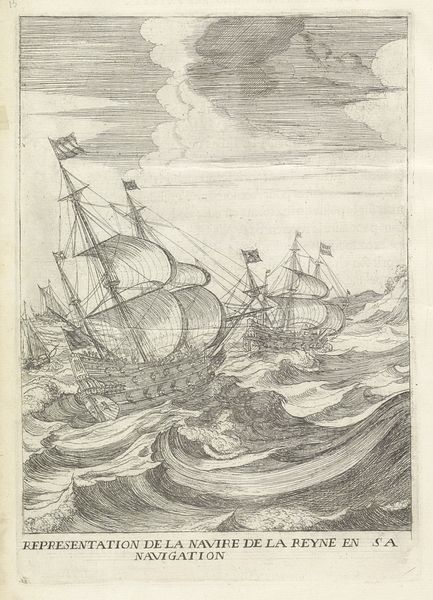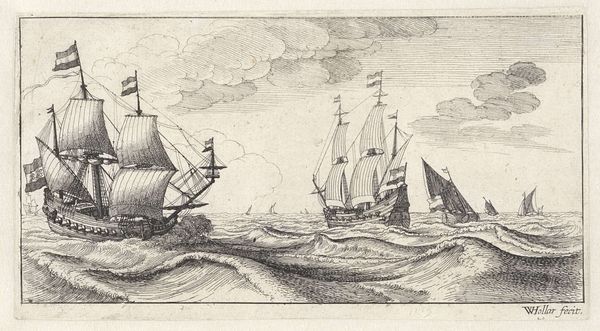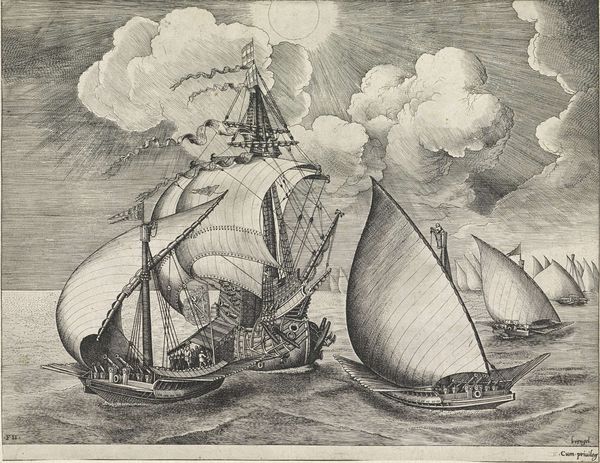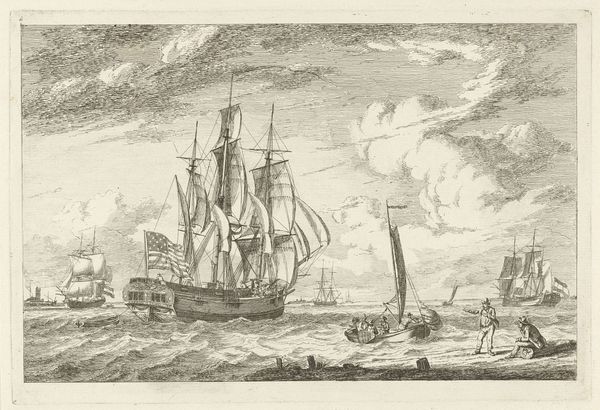
drawing, print, paper, ink, pen
#
pencil drawn
#
drawing
#
baroque
# print
#
landscape
#
paper
#
ink
#
line
#
pen
#
history-painting
Dimensions: 98 × 149 mm
Copyright: Public Domain
Curator: Immediately, I see a depiction of turbulence. The stark contrast of ink on paper creates a dramatic scene. The artist really captured the intensity of a storm at sea. Editor: Let's explore this dramatic scene further. The work before us, titled "Copy," is an undated drawing by Wenceslaus Hollar. Executed in ink on paper, it resides here at the Art Institute of Chicago. The swirling lines suggest an era defined by maritime trade and its inherent risks. Curator: The means of production for these images were essential to trade. Think of the skilled labor required, from sourcing materials to creating multiples of prints that were relatively affordable! Editor: Agreed. The craftsmanship certainly deserves our attention. Look at the meticulous linework to depict these baroque ships; how the waves appear to cascade, frothing and threatening to swallow everything in their path! What do you make of the ships? Curator: Well, ships of this kind signify more than mere vessels. Consider them floating workshops, built using vast resources drawn from various sources and dependent upon laborers often brought from diverse locations through networks of trade. They were integral to global capitalism. Editor: Absolutely. I can also note how the composition, especially the placement of the vessels on opposing diagonals, guides the viewer's eye and reinforces the visual chaos. And note Hollar’s masterful suggestion of volume using simple crosshatching. Curator: Precisely. But, thinking beyond the aesthetics, prints such as this allowed people removed from such dangerous trades and nautical ventures to vicariously experience it through visual form; this print acts as both a document and, in some sense, an act of class consumption. Editor: You're right. By meticulously observing its form, considering its structure and arrangement, we’ve extracted a complex image, charged with the realities of its era. Curator: We started from an emotive position, but then brought to the foreground labor practices inherent to trade that this piece visually documents, ultimately broadening our view. Editor: And it reminds me of how fruitful the process can be when close visual inspection meets social insight. Thank you.
Comments
No comments
Be the first to comment and join the conversation on the ultimate creative platform.













